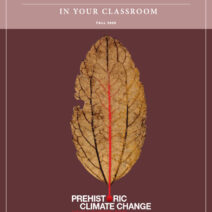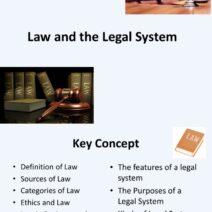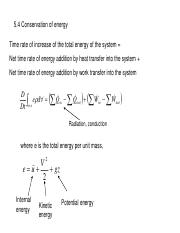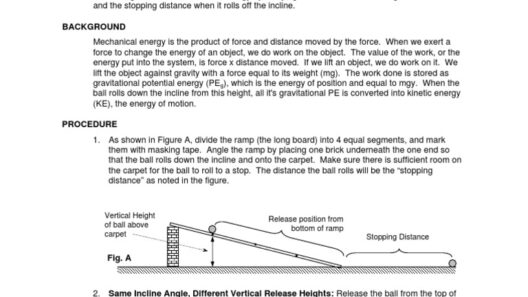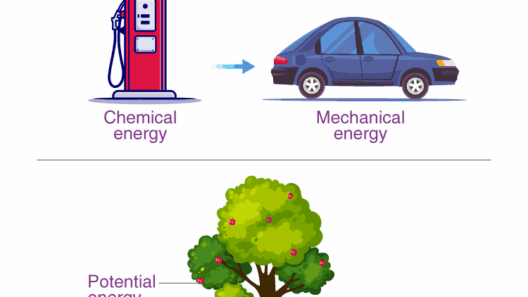The concept of energy conservation resonates profoundly in contemporary discourse, given the pressing need to address ecological challenges and mitigate climate change. Energy conservation refers to the practice of reducing energy consumption through using less of a given service, effectively minimizing wastefulness. However, a fundamental aspect of understanding energy conservation lies in the units used for its measurement, which can drastically affect perspectives on efficiency and sustainability.
When we talk about energy, we often encounter a plethora of terms and units of measurement that can be bewildering. The most commonly utilized unit for measuring energy in the context of conservation is the joule (J), a derived unit that encapsulates the energy transferred when a force of one newton is applied over a distance of one meter. This unit is crucial in scientific contexts as it provides a quantitative basis for evaluating energy expenditure.
Another relevant unit is the kilowatt-hour (kWh), widely recognized in residential and commercial energy bills. A kilowatt-hour represents the amount of energy consumed when a power of one kilowatt is used for one hour. Understanding kWh is particularly salient for homeowners looking to reduce their energy costs and consequently, their carbon footprints. When employing the concept of kWh, individuals are often confronted with tangible assessments of their energy usage, which can stimulate conscious efforts towards conservation.
In addition to joules and kilowatt-hours, the British thermal unit (BTU) emerges as another critical unit in energy measurement, especially in the realm of heating and cooling. One BTU is defined as the amount of heat required to raise the temperature of one pound of water by one degree Fahrenheit. BTUs are predominantly employed in the heating, ventilation, and air conditioning (HVAC) industry, signifying the energy required for heating and cooling systems. The ubiquitous nature of BTUs in these industries highlights their relevance in discussions about energy efficiency and conservation practices. Understanding BTUs can empower individuals and establishments to reevaluate their energy systems, potentially revolutionizing how they approach energy consumption.
A notable concept tied to energy conservation is the efficiency rating of appliances and systems, often expressed as a percentage. Energy efficiency indicates how much of the energy consumed is converted into useful work. For instance, if a device consumes 100 joules of energy but only converts 30 joules to useful output, it operates at 30% efficiency. Learning to discern efficiency ratings can help consumers make informed choices, directing their purchases towards products that promise lower energy consumption for equivalent performance. This shift in consumer behavior can collectively contribute to large-scale energy conservation efforts.
Furthermore, the metric system introduces yet another dimension with the use of gigajoules (GJ) and terajoules (TJ), which correlate to larger scales of energy measurement, relevant for industrial applications and national energy consumption metrics. One gigajoule equals one billion joules, while a terajoule equals one trillion joules. These larger units are pivotal for policymakers and researchers when they analyze energy trends or project future energy needs, serving as a fulcrum for energy management initiatives. By understanding and utilizing these larger units, stakeholders can foster efficient resource allocation and conservation efforts on a broader scale.
The global landscape of energy conservation also involves the concept of renewable energy units, such as those measured in watts (W), the unit representing power, or the rate at which energy is used or generated. A solar panel’s output is expressed in watts (or kilowatts), compelling individuals and organizations to comprehend the relationship between energy production and consumption in the quest for sustainability. This awareness is pivotal in encouraging the adoption of renewable energy sources—energy conservation is not merely about consuming less; it also requires leveraging sustainable technologies that generate energy efficiently.
Equally essential is the role of energy audits, assessments that effectively quantify the energy used across a facility, identifying inefficiencies and areas for improvement. These audits often present findings in various units, enabling stakeholders to gauge their energy consumption effectively. Such analytical assessments can energize corporations and individuals alike to initiate significant changes aimed at enhancing energy efficiency and conservation.
As energy conservation gains momentum globally, a paradigmatic shift in perspective is imperative. Viewing energy not merely as a commodity but as a critical resource whose conservation could prolong our planet’s vitality encapsulates a significant aspiration. Through understanding the various units of measurement applied to energy conservation, individuals can foster curiosity and commitment towards more sustainable practices.
In conclusion, the journey toward effective energy conservation is contingent upon a robust understanding of the units of measurement associated with energy. Through the lens of joules, kilowatt-hours, BTUs, and various other measurements, the realization dawns that energy conservation is intricately linked to consumer choices, industrial practices, and policy decisions. Empowering oneself with this knowledge instills a sense of agency, transforming the narrative into one of proactive engagement with our energy future. By embracing this awareness, society can foster a culture of sustainability, ensuring the long-term viability of our planet for generations to come.

